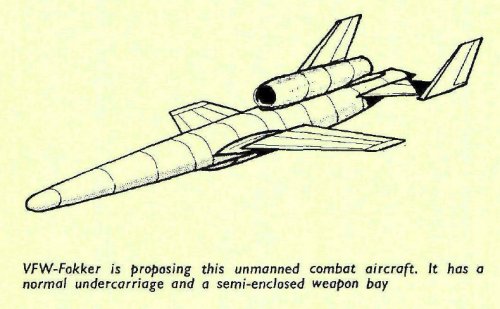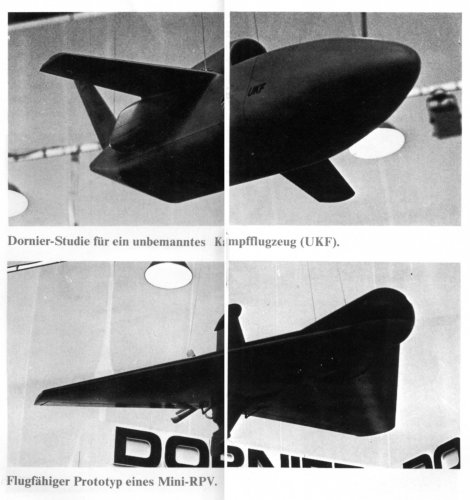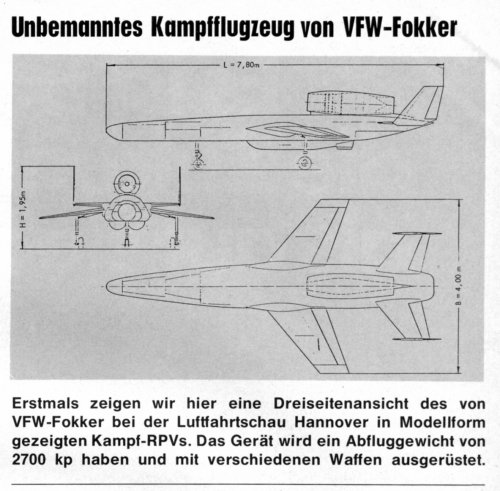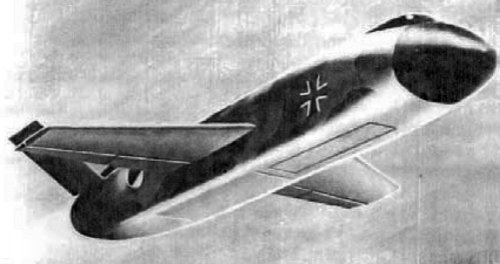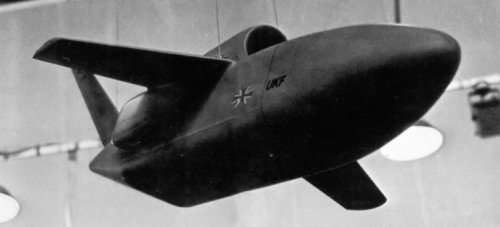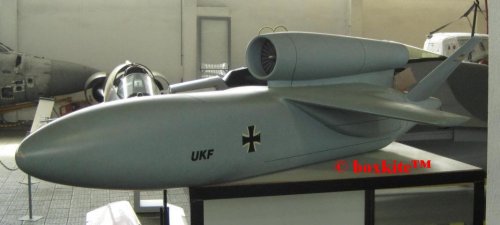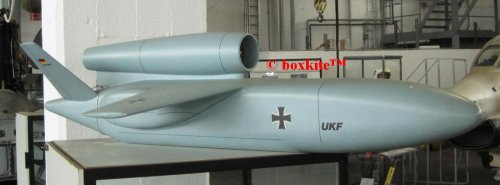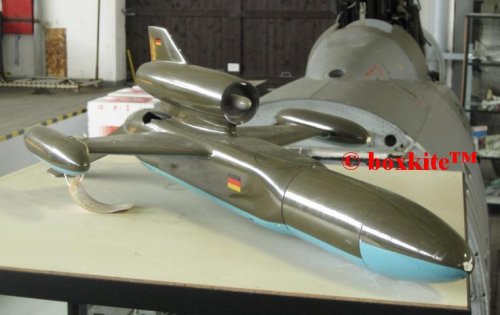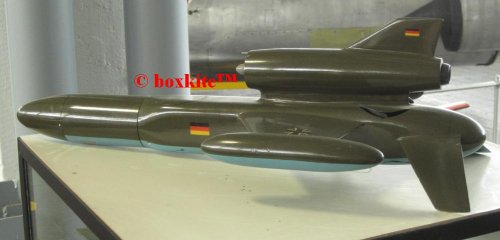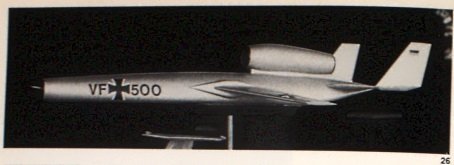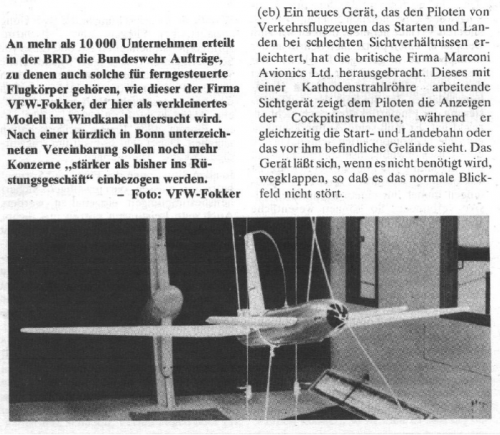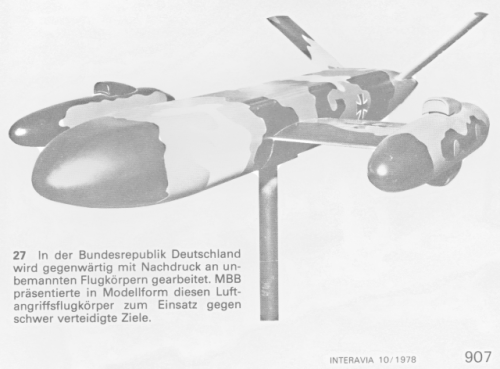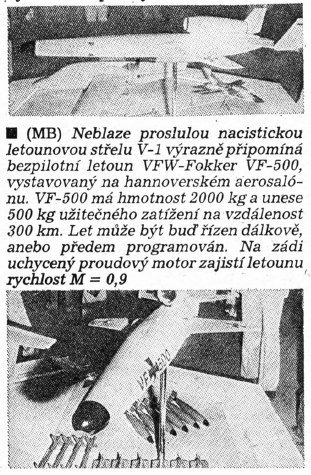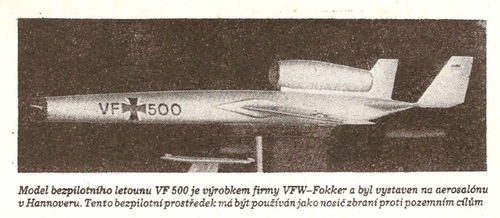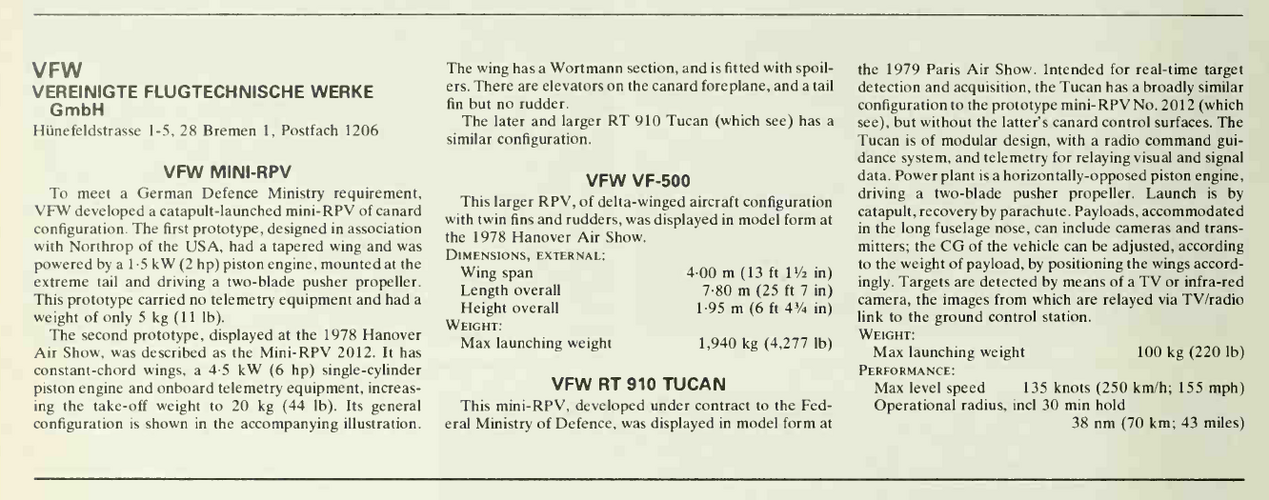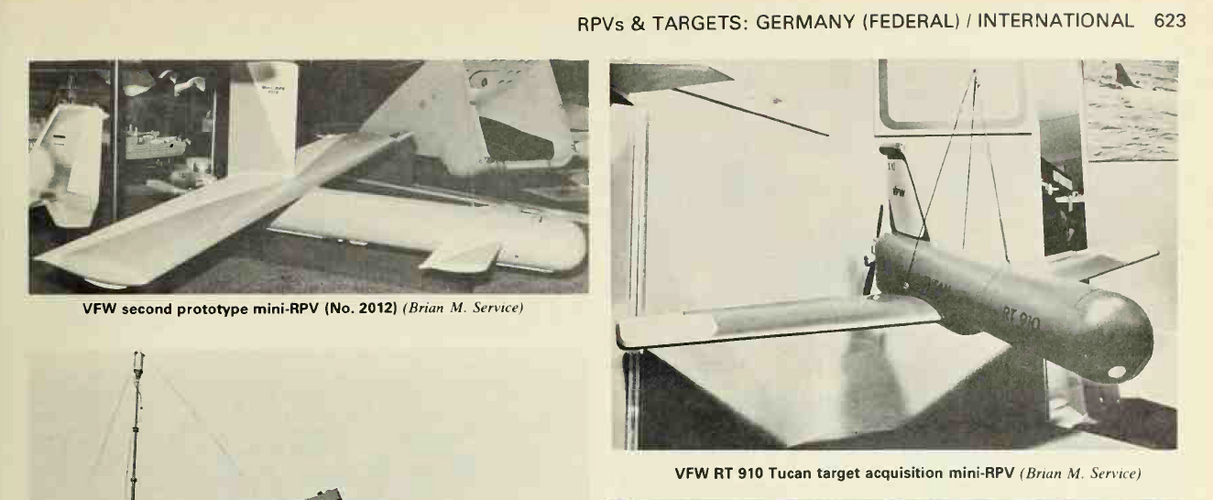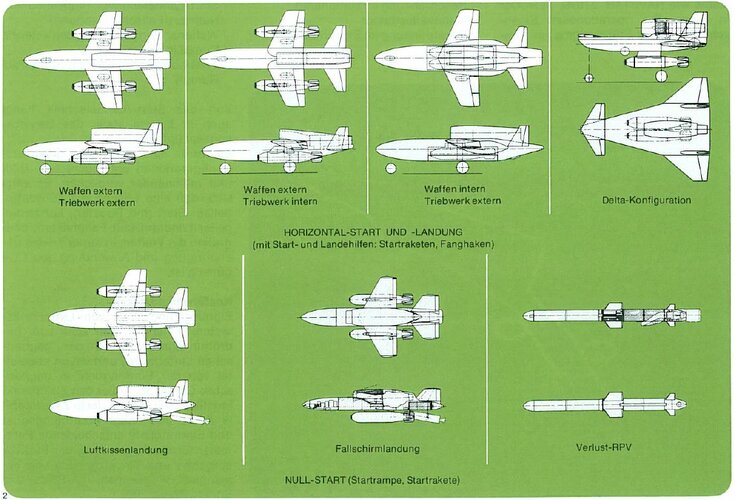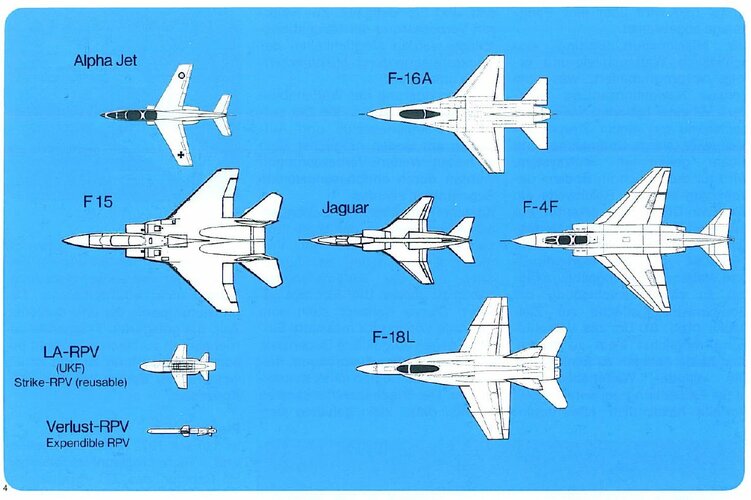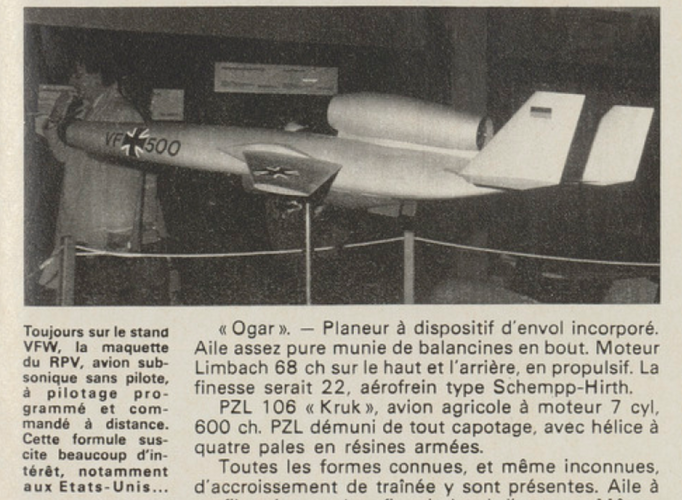Matej
Multiuniversal creator
UAU! In 1976!!
http://www.flightglobal.com/pdfarchive/view/1976/1976%20-%200763.html
VFW-Fokker has now published a proposal for an unmanned
attack aircraft which could be cost-effective in
preparing heavily defended target areas for attack by
manned aircraft. It would also be capable of penetrating
up to 100km into enemy territory from behind the friendly
SAM missile belt. Three stages of sensor and controlsystem
sophistication are proposed, ranging from today's
established technology to a remote target-seeking and
attack capability. The aircraft would have a single turbojet
mounted above the fuselage and could carry bombs
or missiles in a semi-submerged centreline weapon station.
Gross weight would be 2,000kg (4,4001b), weapon load
500kg (1,1001b), top speed Mach 0.9 at 100m (320ft), and
radius of action 300km (180 miles).
The first-stage aircraft would have a basic low-flying
system designed to keep it at under 300ft. A strappeddown
inertial system would be updated by terrain
terraincomparison
(Tercom) radar and beacons to fly the aircraft
over a programmed stationary target within the coverage
of a BL.755 cluster bomb or a Rockeye weapon. The
aircraft would take off and land on a normal undercarriage,
making automatic landings with the aid of the
German Setag or Mitag microwave landing systems. Peacetime
training would require virtually no flying, as is the
case with current missile batteries.
The second-stage VFW-Fokker unmanned aircraft would
add to the first the Sensor System fur Vorausgewahltes
Sehen (Sevas), embodying FLIR and a ranging and
tracking laser. The 40 FLIR detectors, having a + 20°
vision arc, would pick up any infra-red-radiating target
once they were turned on at the end of a programmed
approach flight. Then, without any telemetred contact with
the control station, the weapon would be released on
the target. The FLIR would simply provide a degree of
last-minute automatic detection and the laser would help
solve the aiming equation. Alternatively, the aircraft could
be set to detect and attack a target illuminated by a
ground-based laser designator. Sevas would give the aircraft
a degree of "intelligence," but it could be diverted
by decoy targets.
Only at the third stage is a live air-to-ground data link
envisaged. The link would be triggered to transmit a still
picture to the ground operator whenever the Sevas detected
a heat-radiating target. The operator would quickly
examine the picture and simply reply "Attack" or
"Ignore." It is felt that he would not have time to observe
a continuous visual image or to exercise real-time control.
The aircraft could also carry passive-warning radar to
identify transmitting SAM vehicles amidst a large
armoured force.
The low data rate of the proposed link might allow
the use of HF or even lower frequencies, which would
eliminate the need for line-of-sight contact. Control range
could be extended 200km (120 miles) into enemy territory
and there would be no need for airborne relay
stations. Countermeasures would be made extremely difficult
by both the low frequency and the low transmission
rate.
http://www.flightglobal.com/pdfarchive/view/1976/1976%20-%200763.html

